The Wood Duck, scientifically known as Aix sponsa, is one of the most beautiful and colorful bird species in the world. It is a breathtakingly beautiful waterfowl species that captivates birdwatchers and nature enthusiasts with its vibrant colors and unique markings. Renowned for its exquisite plumage and graceful nature, the Wood Duck is often referred to as “nature’s masterpiece.” In this article, we will explore the fascinating world of the Wood Duck, shedding light on its appearance, habitat, behavior, and conservation efforts.
Wood Duck images
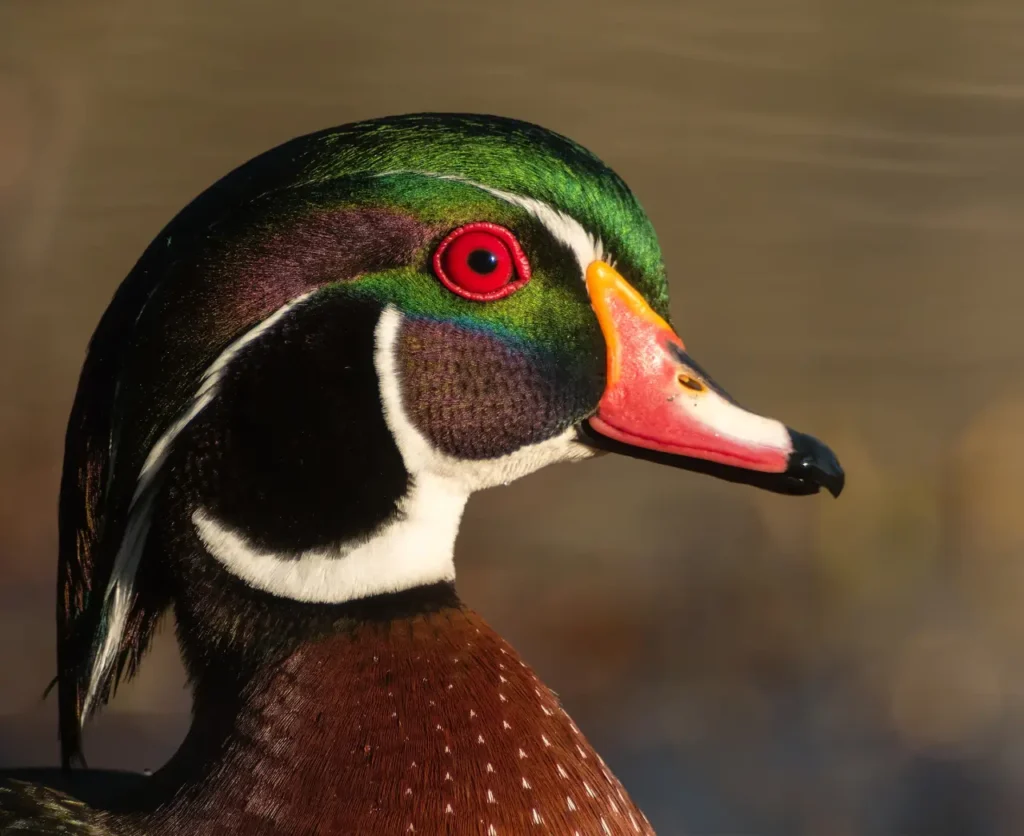
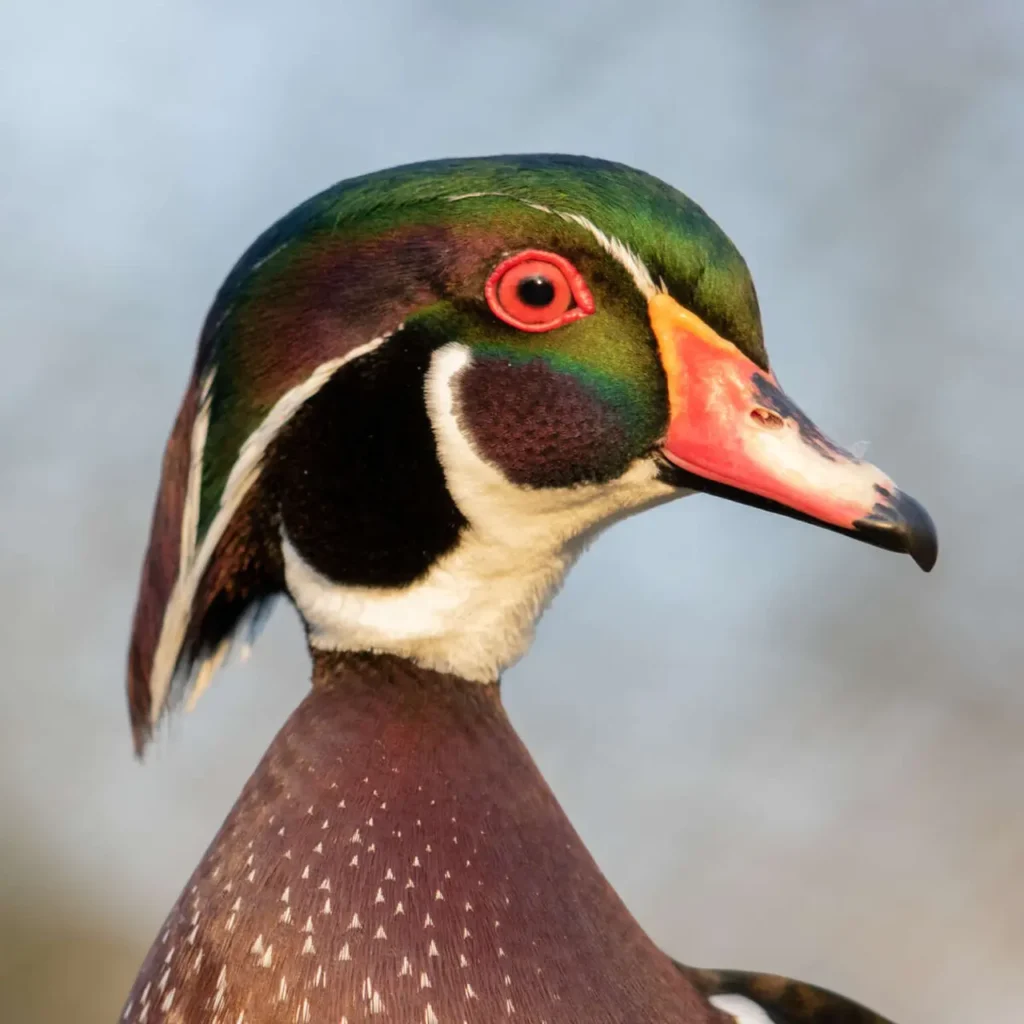
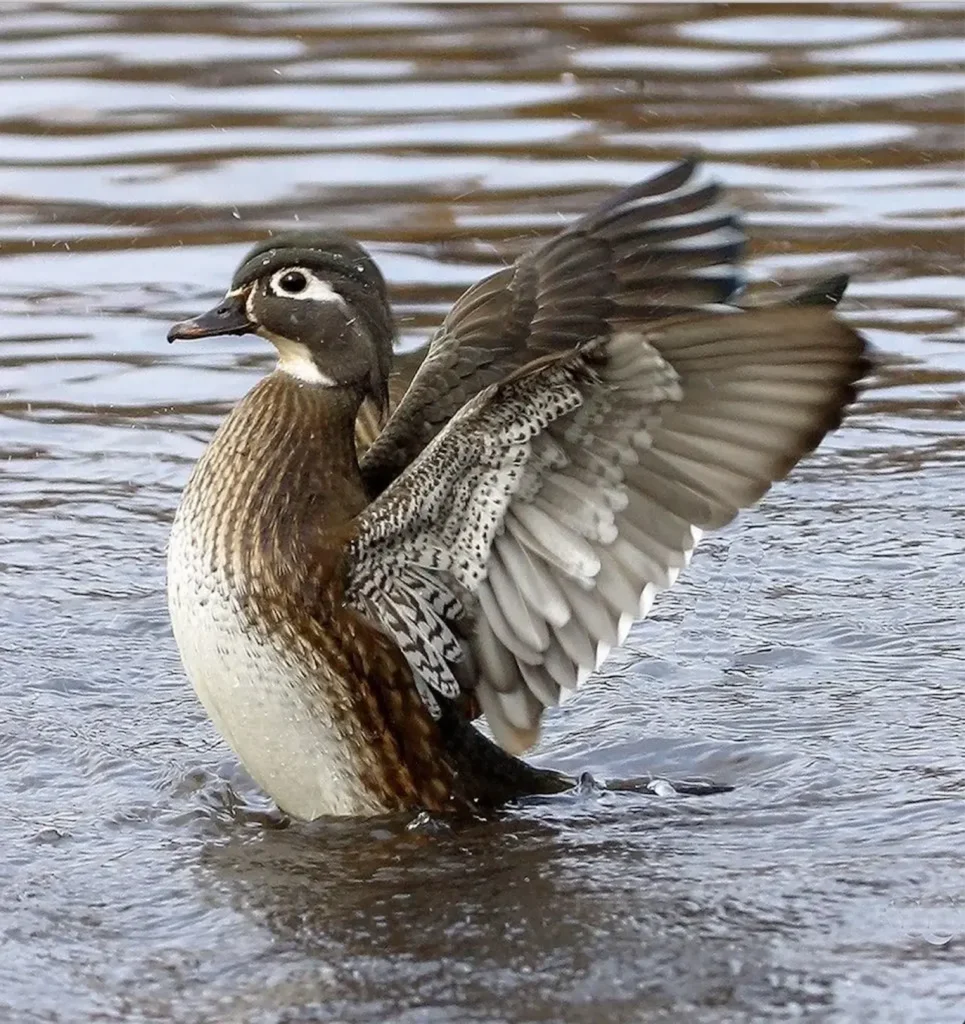
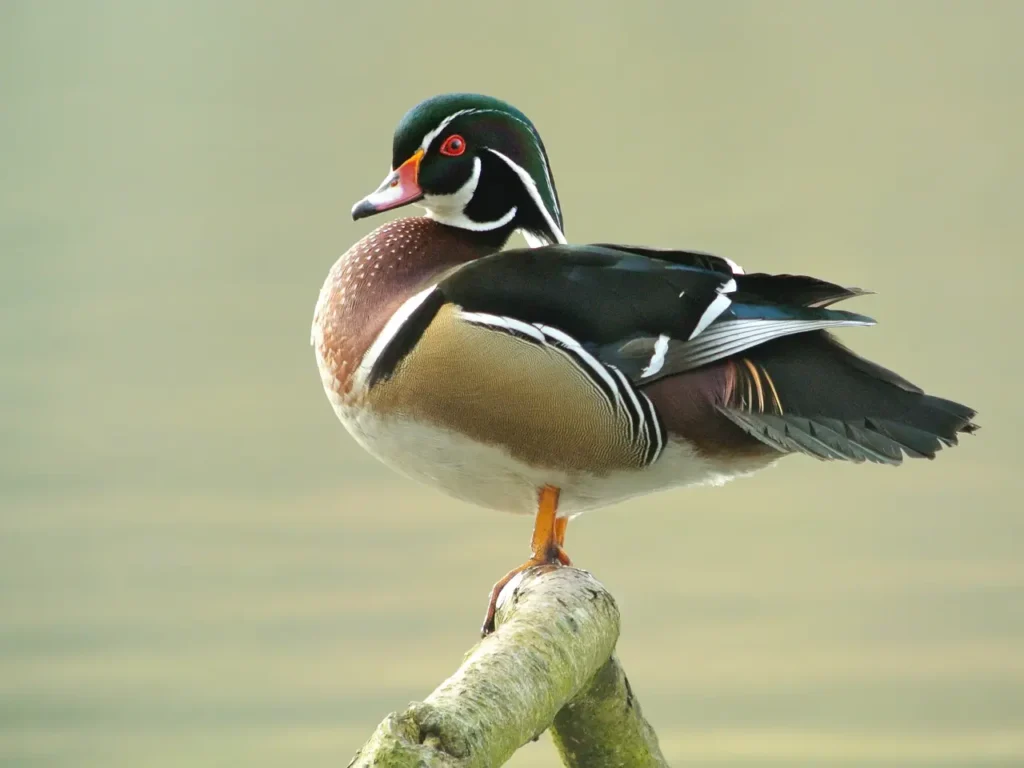
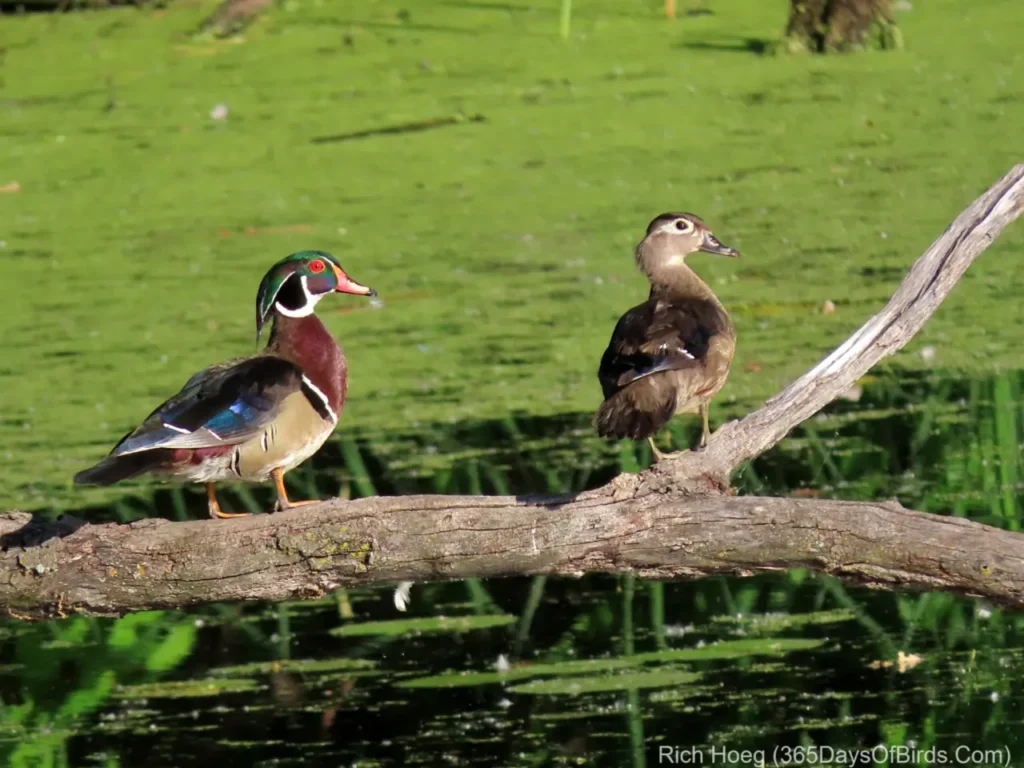

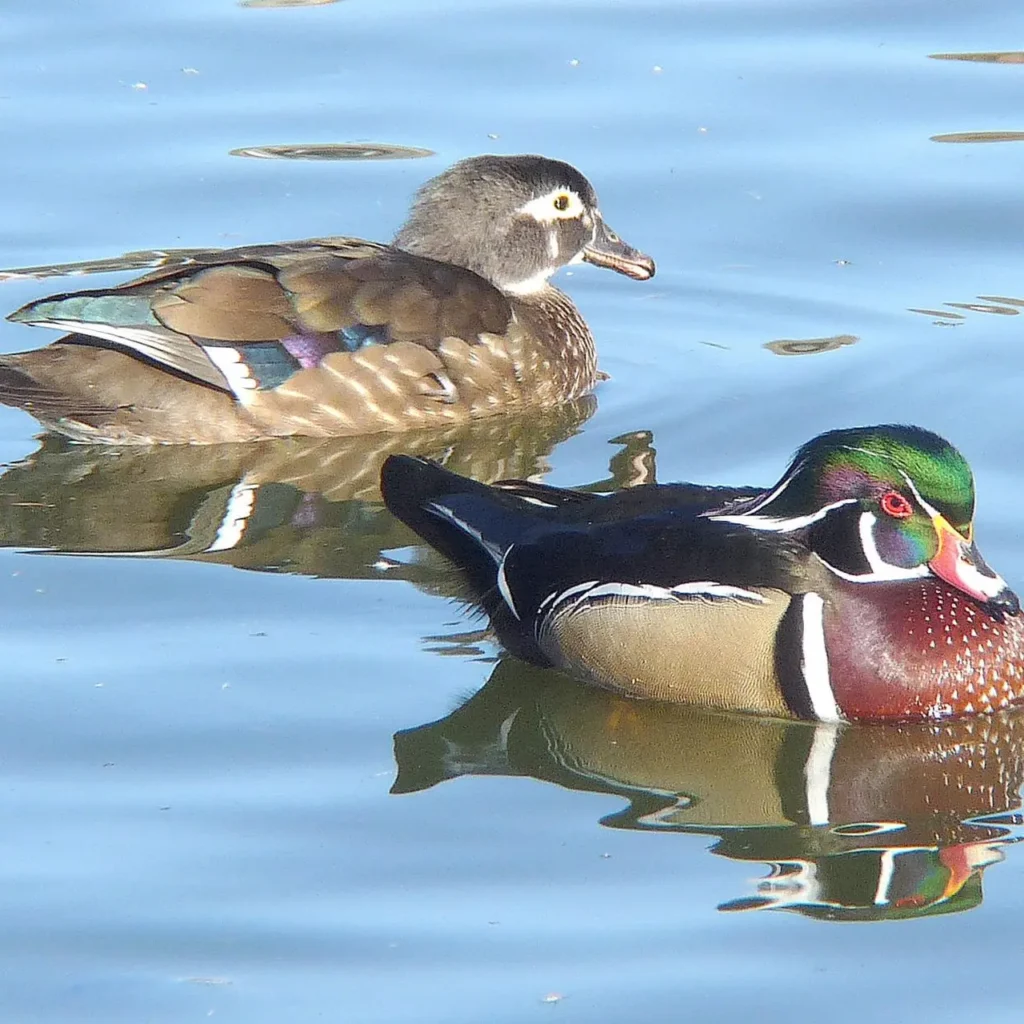
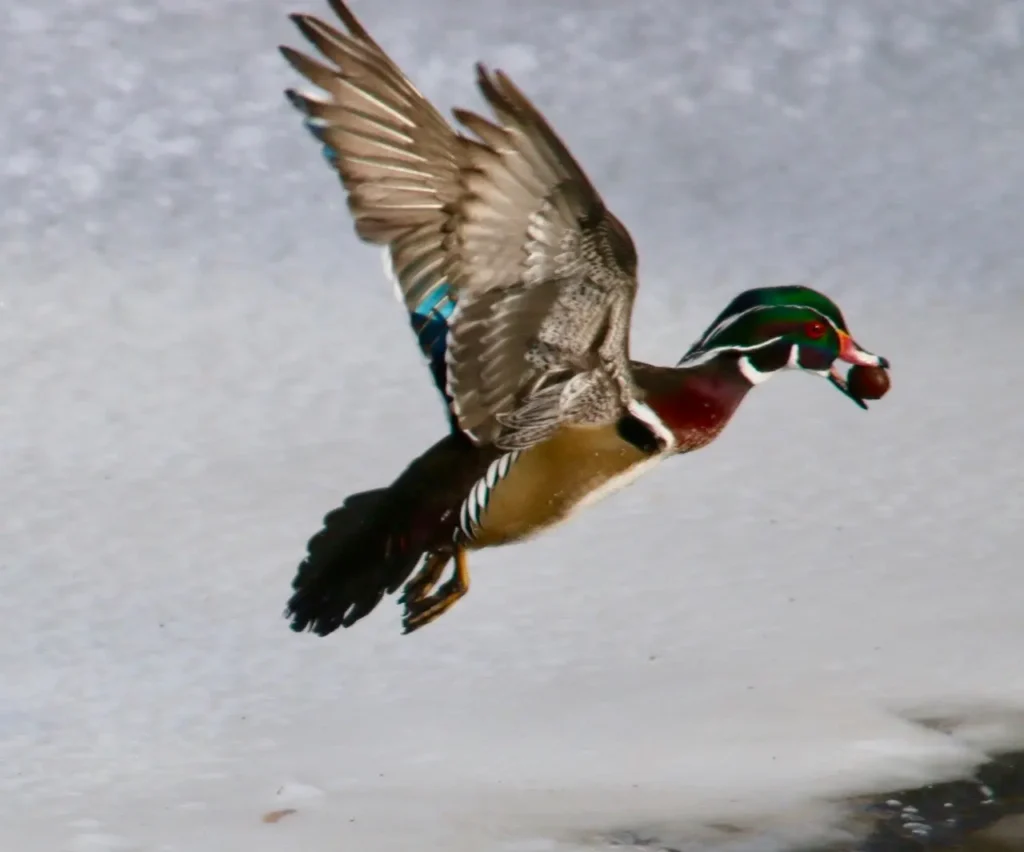
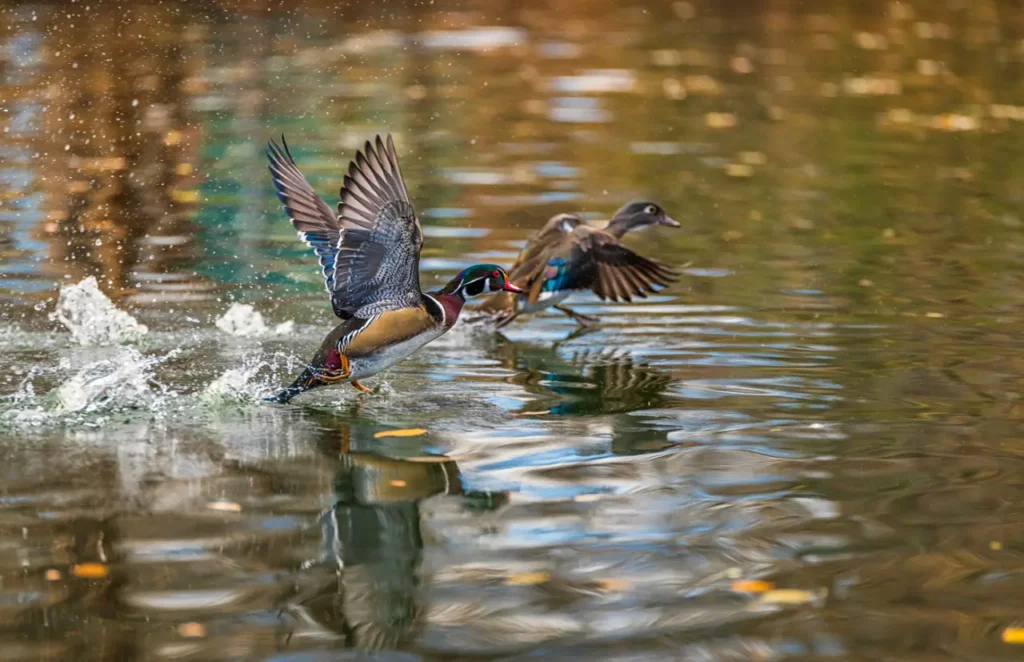
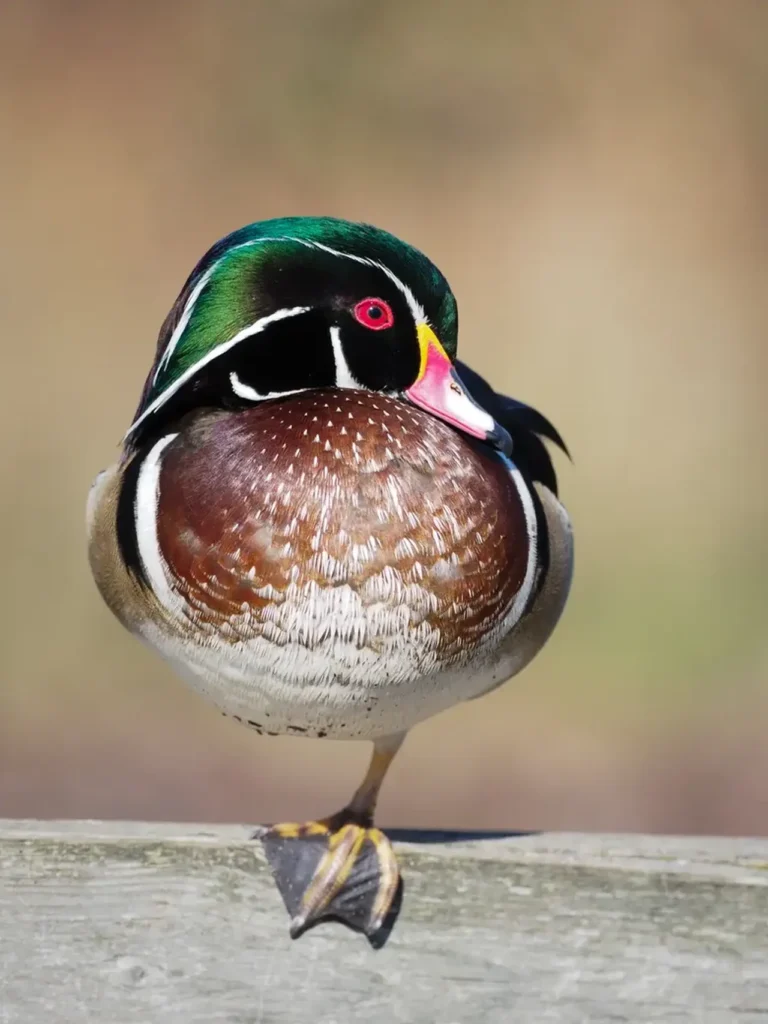
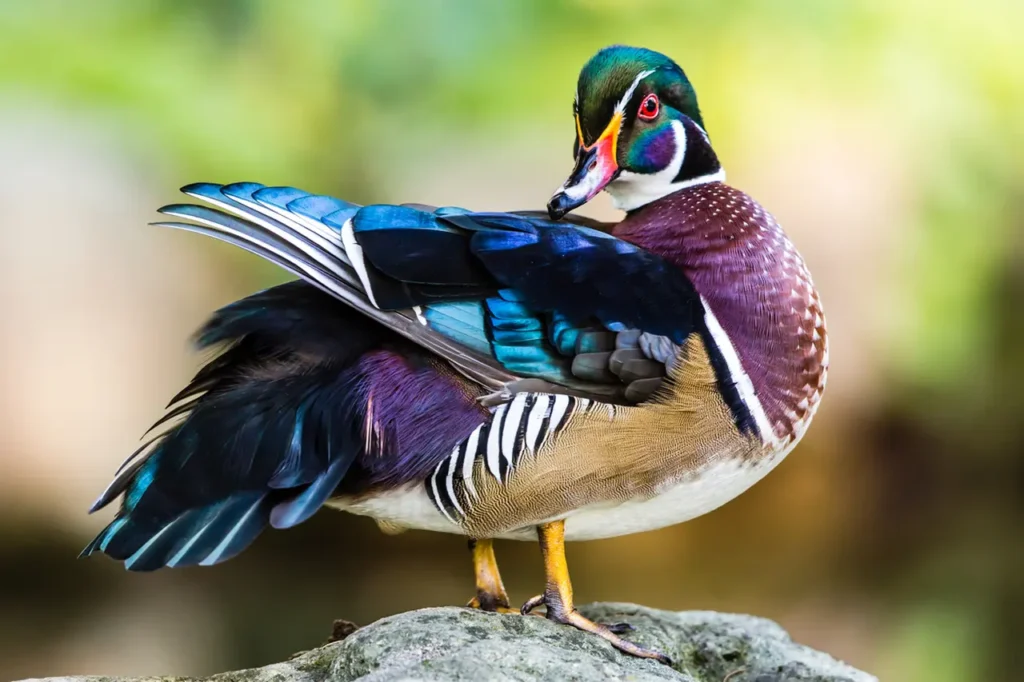
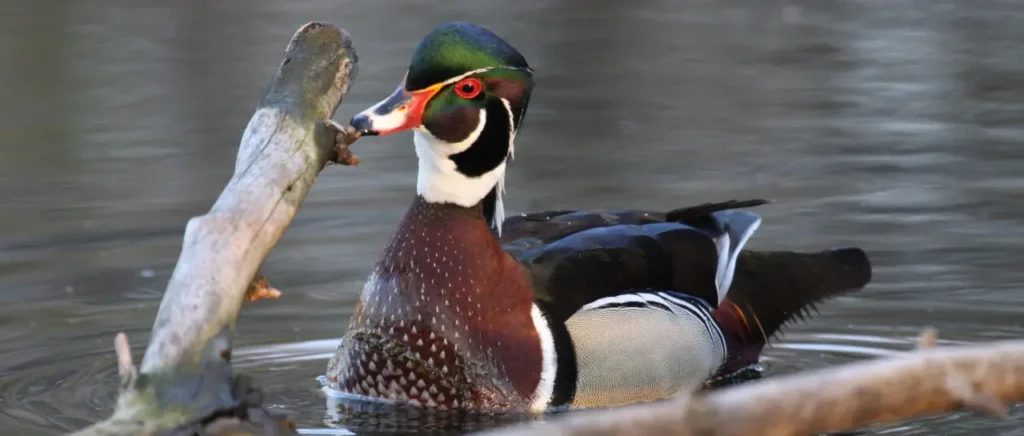
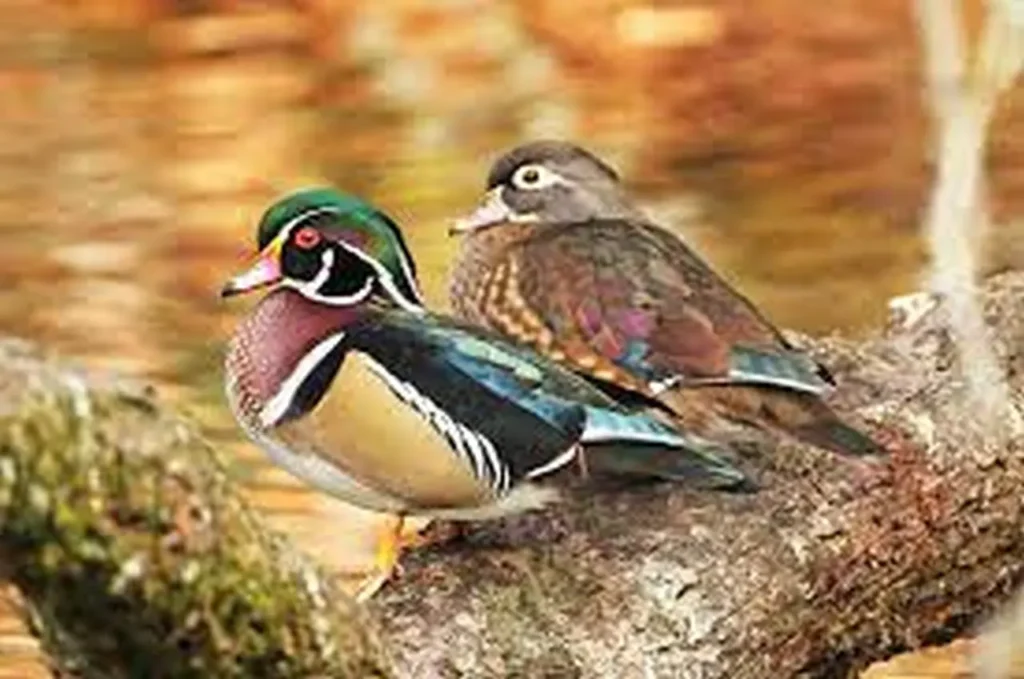
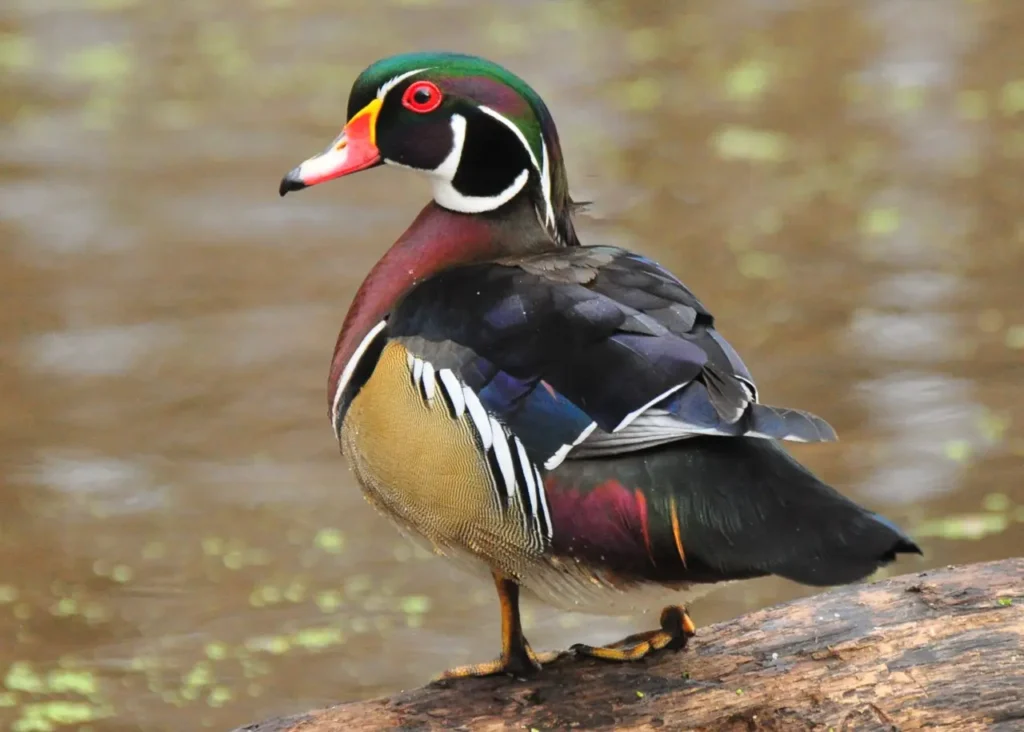
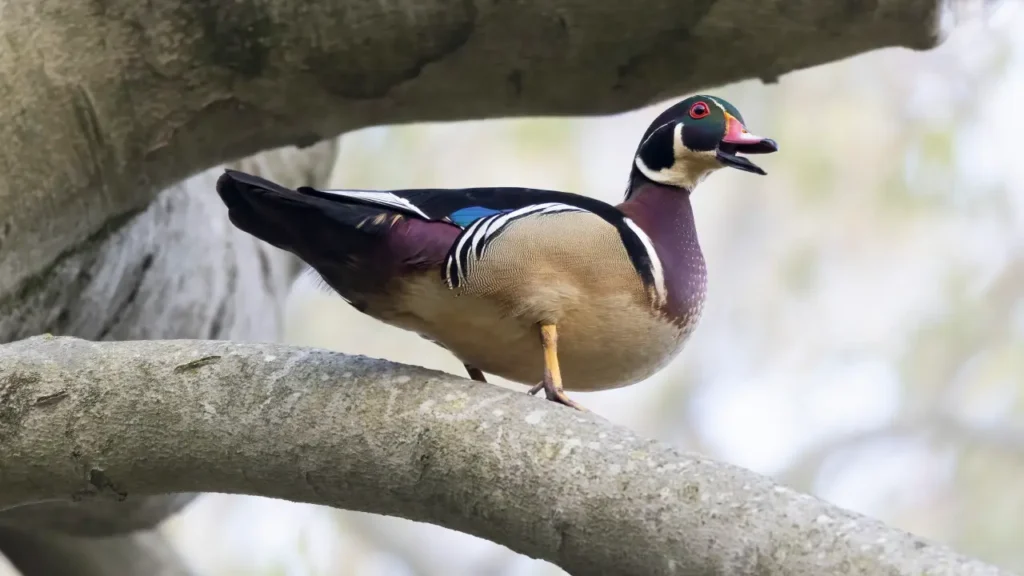
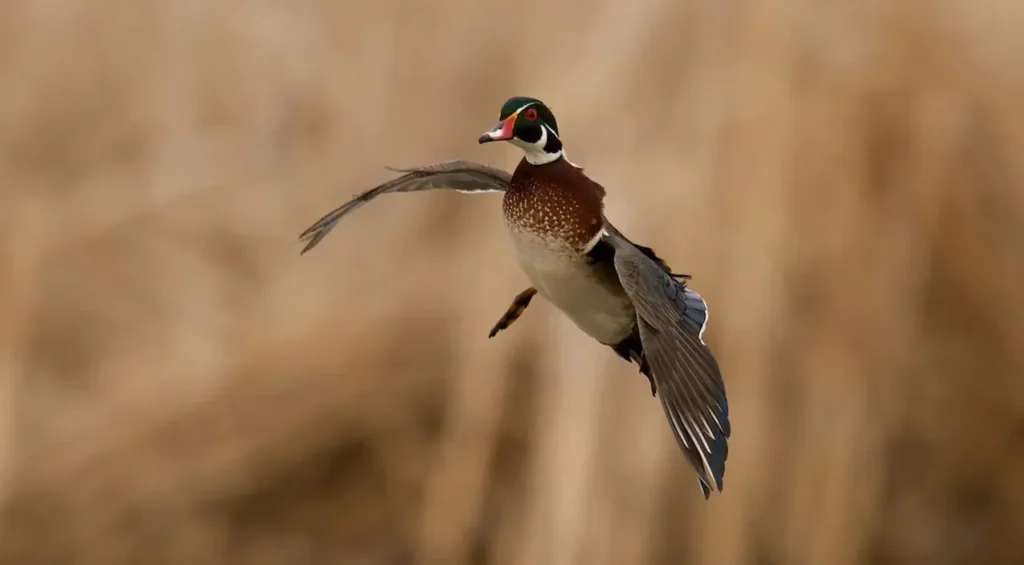
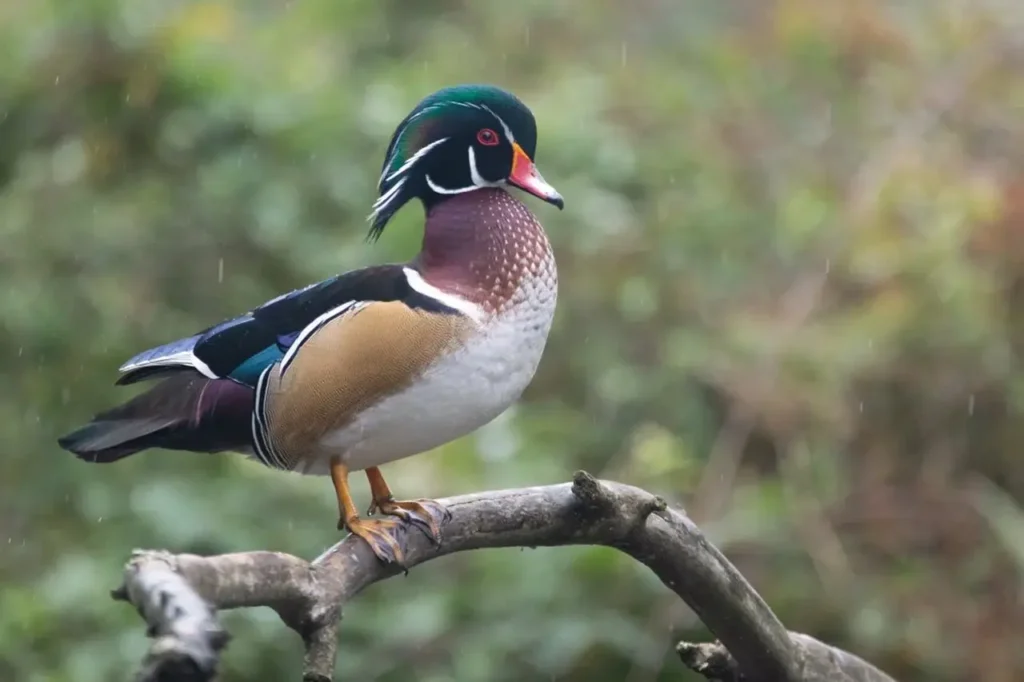
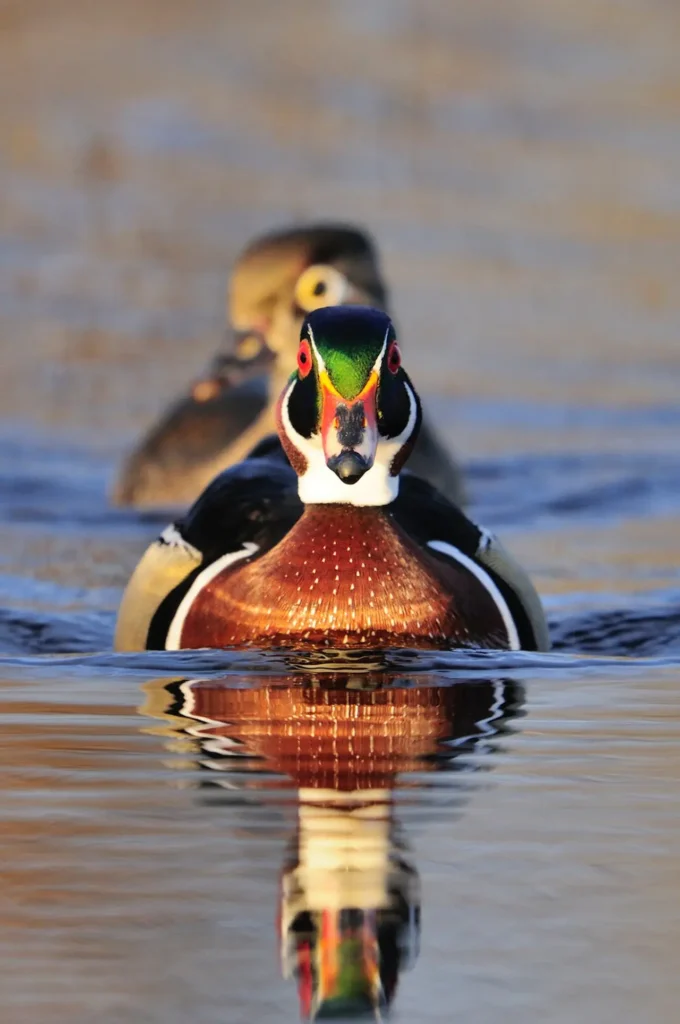
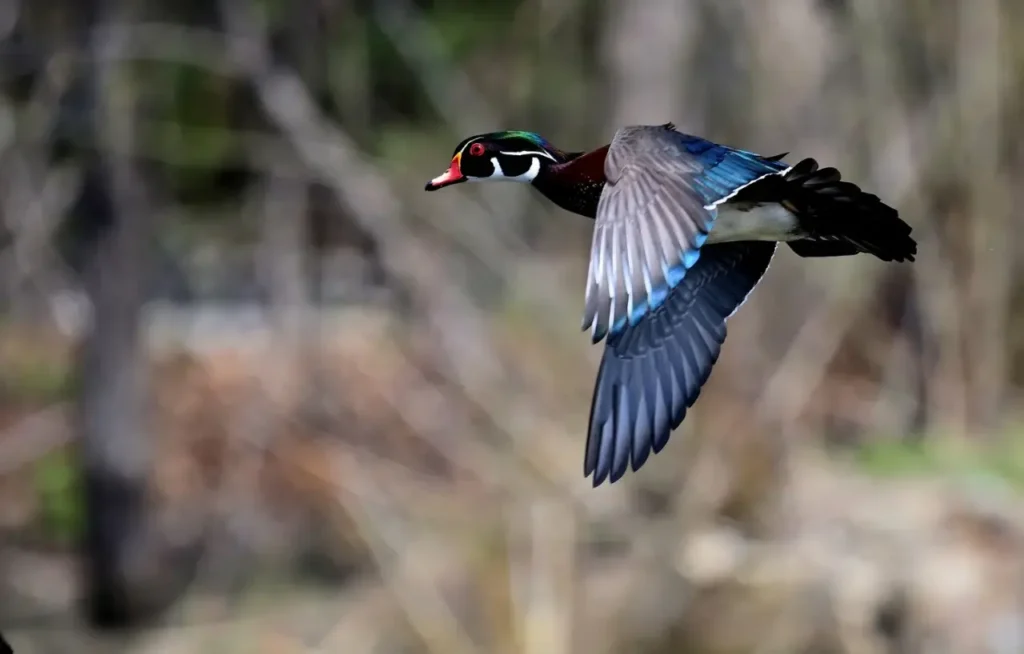
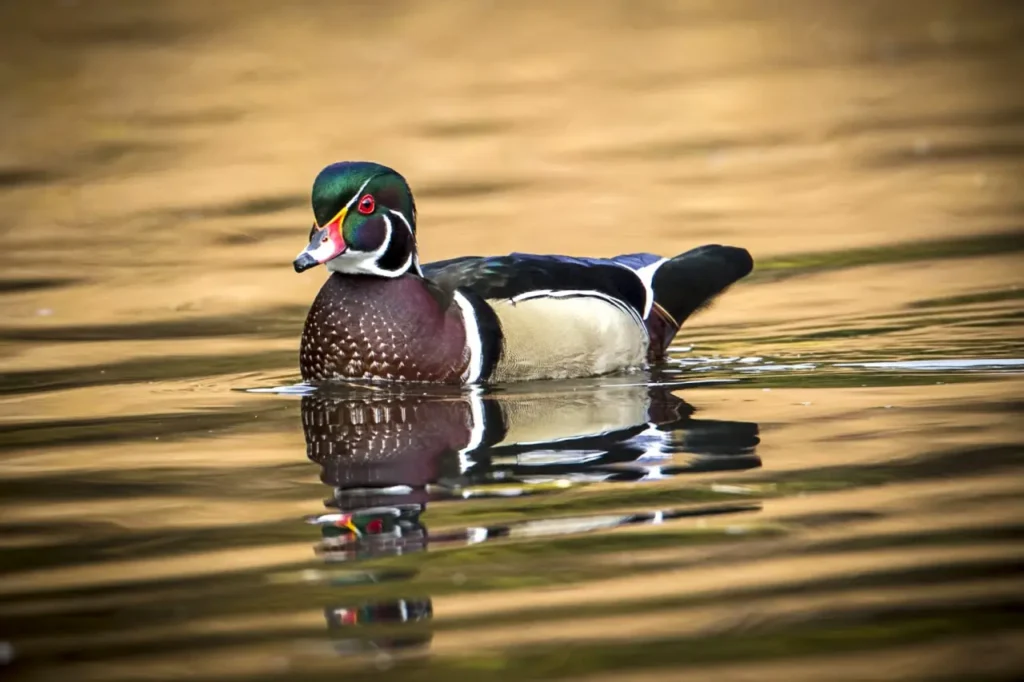
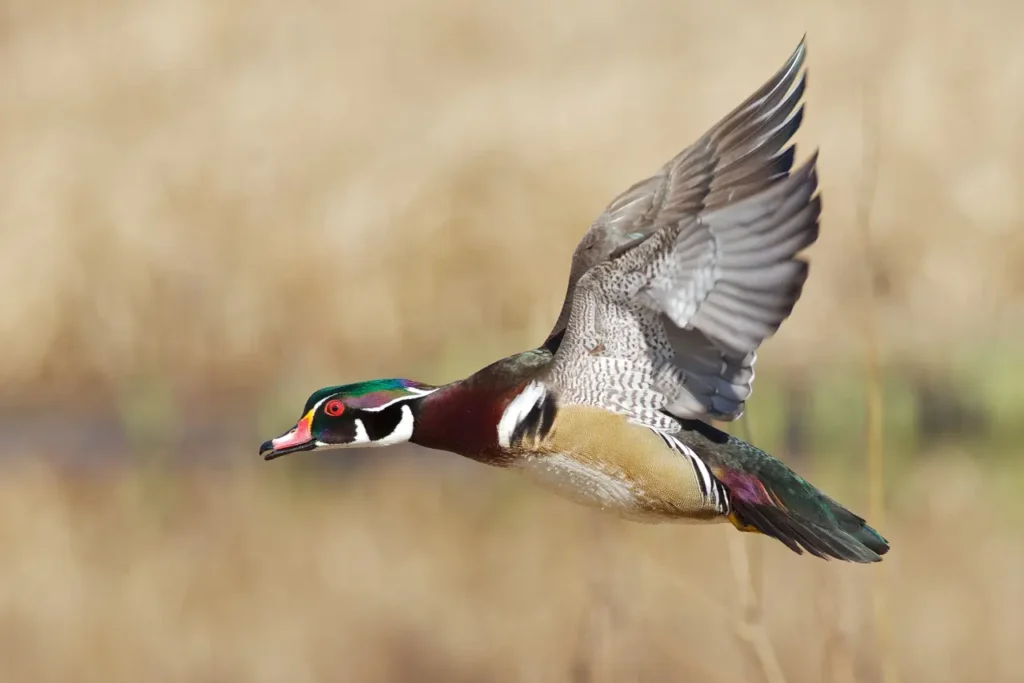
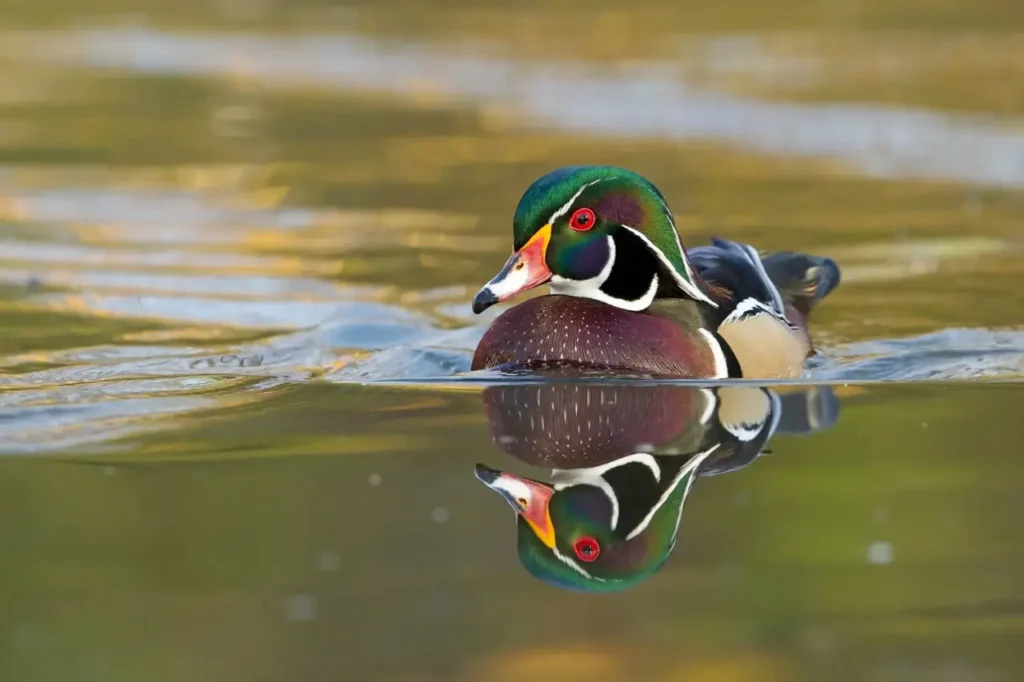
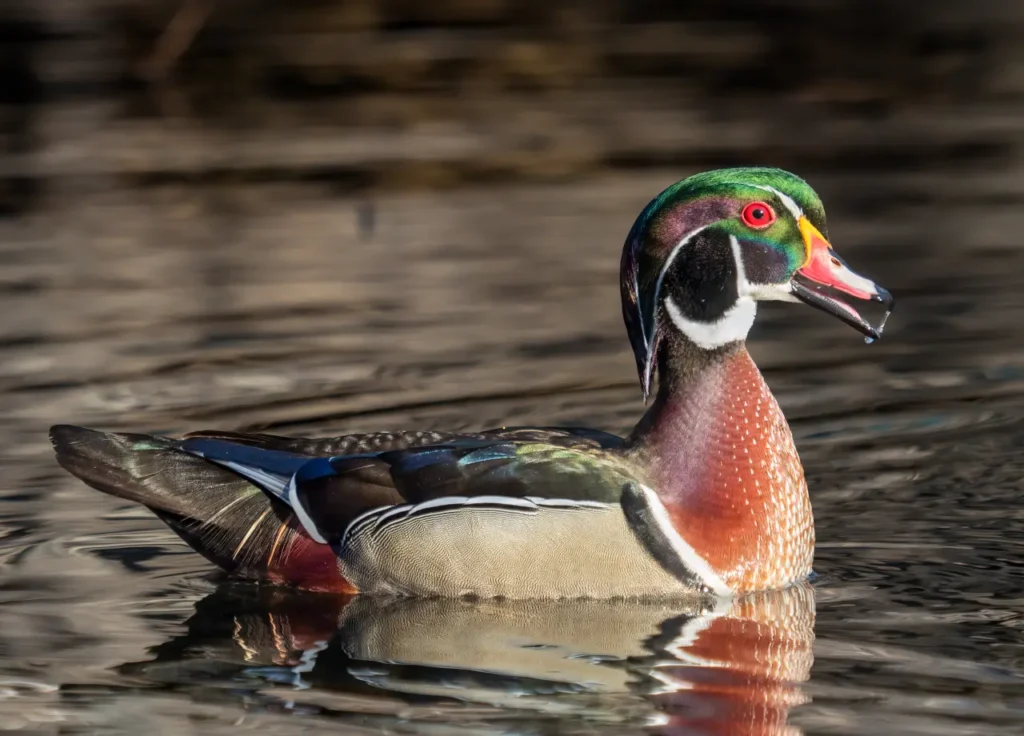
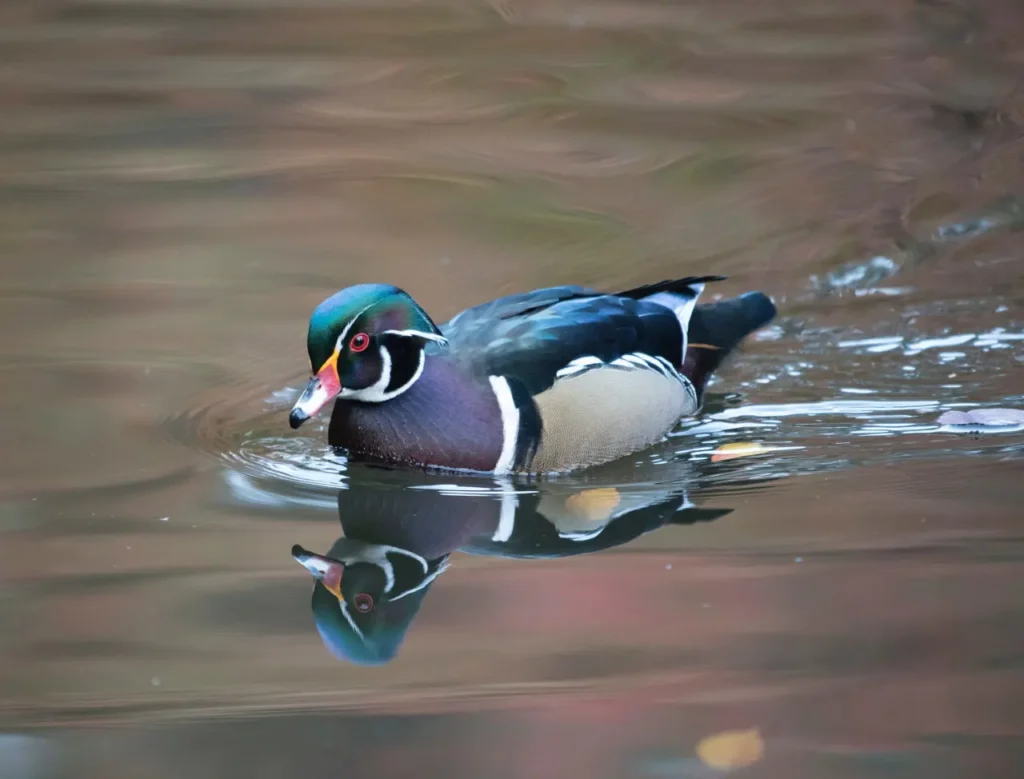
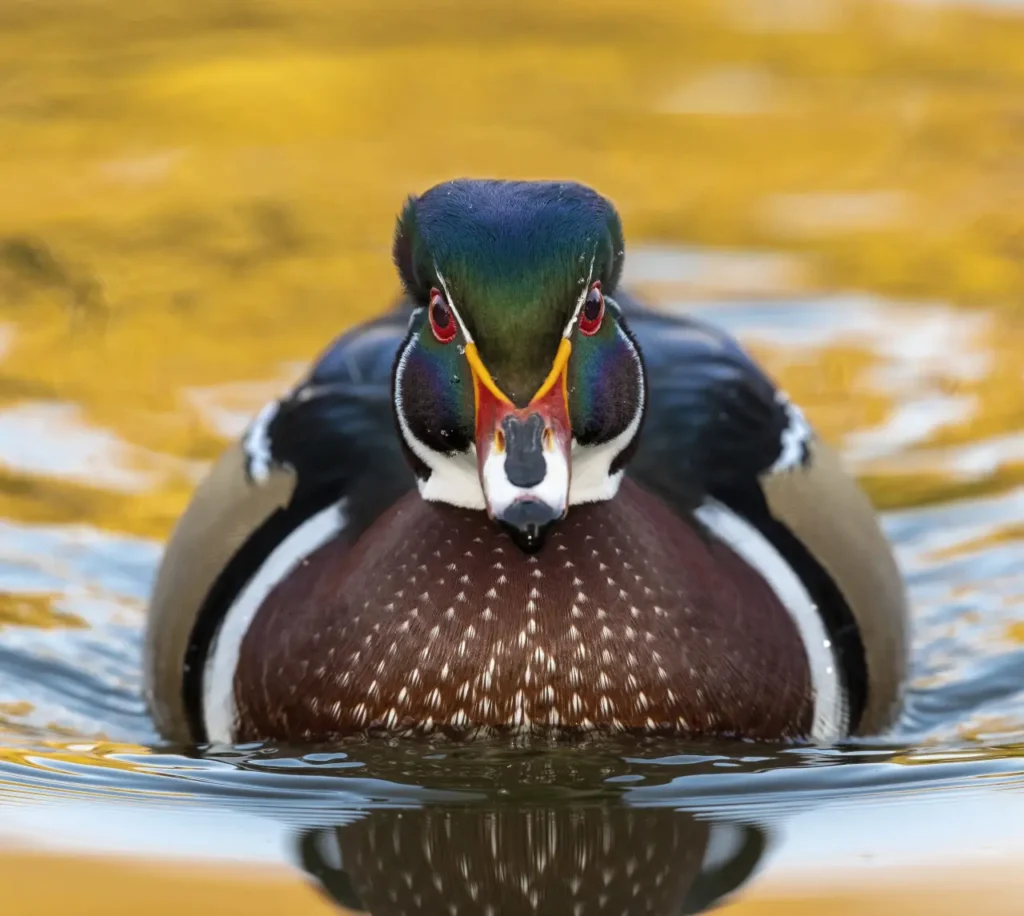
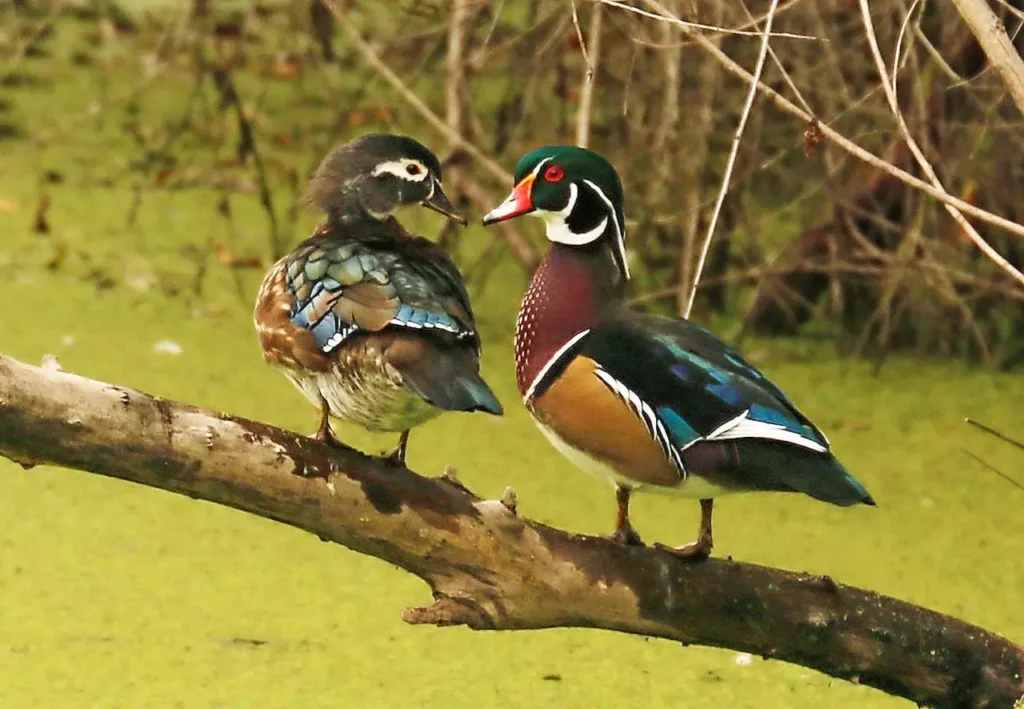
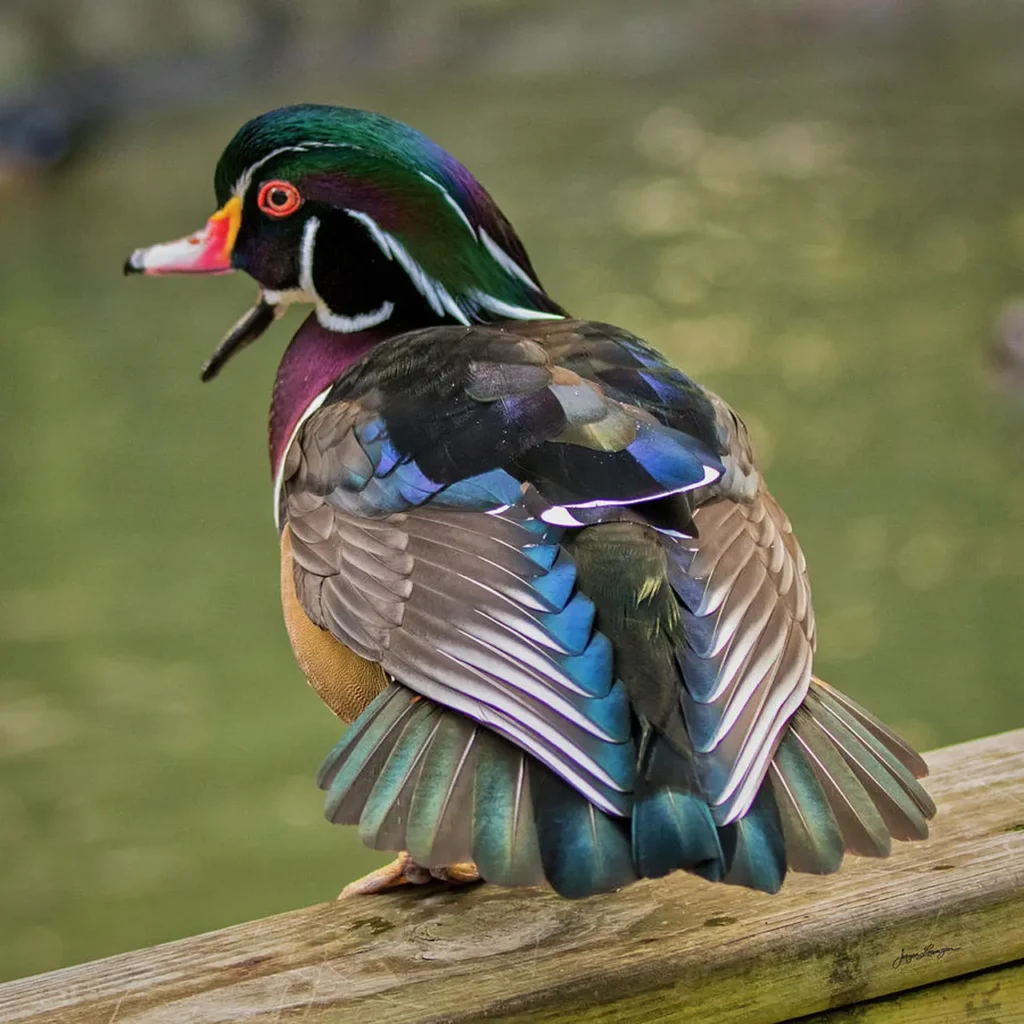
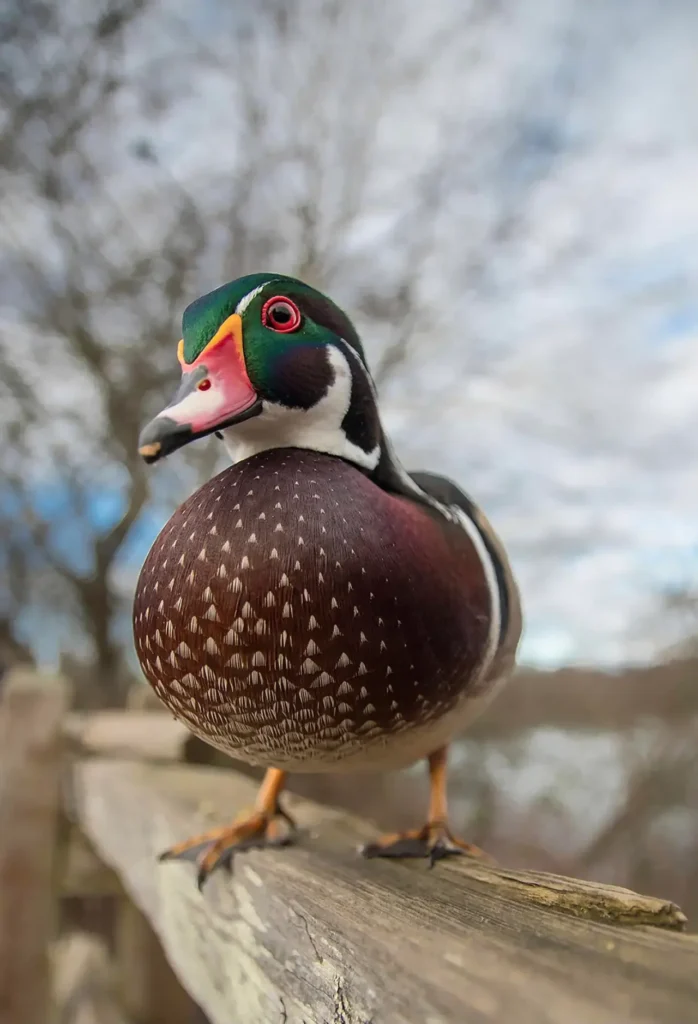

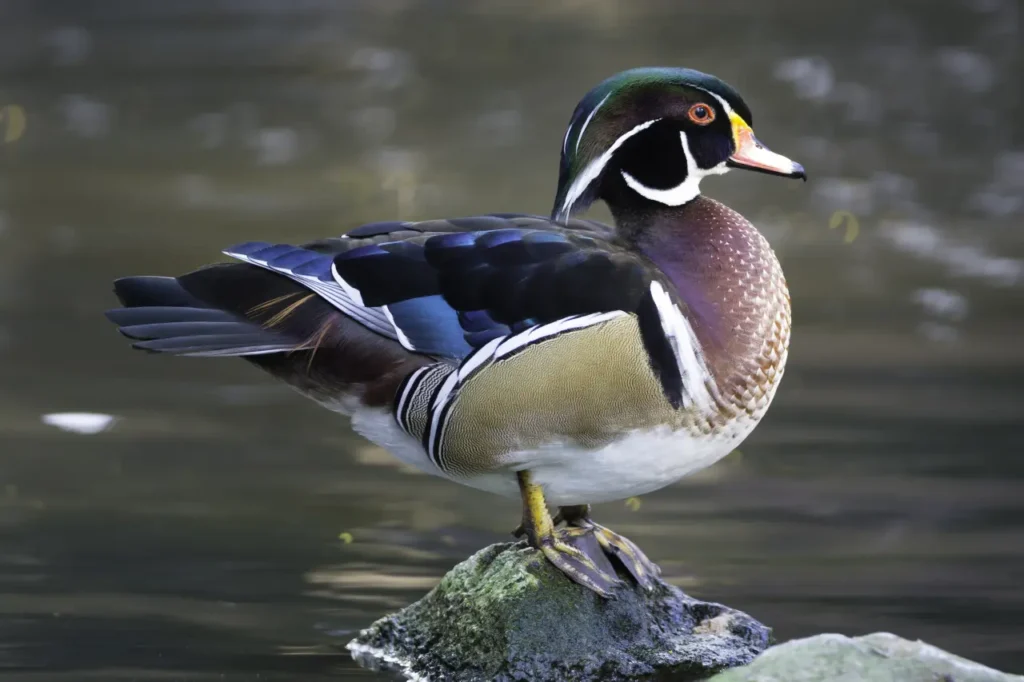
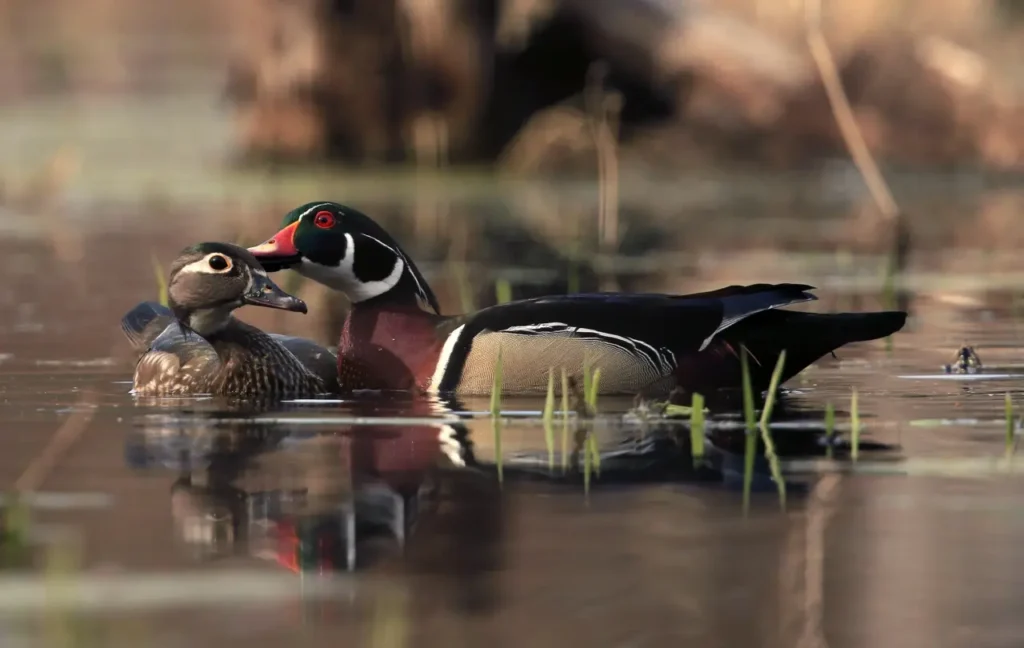
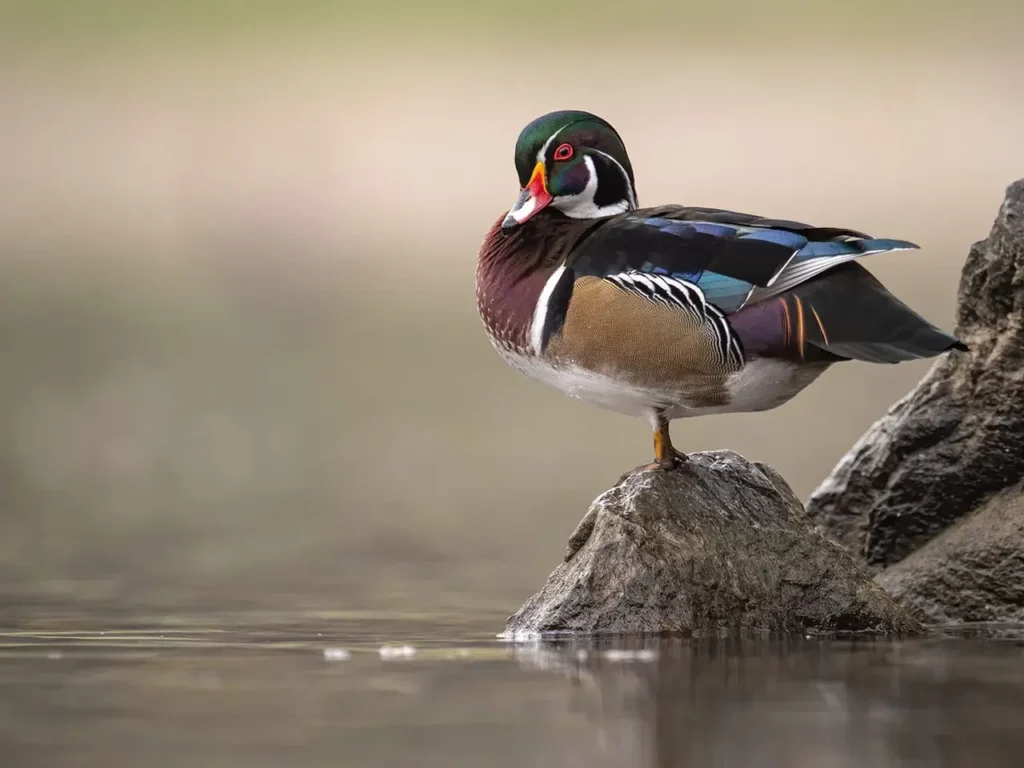
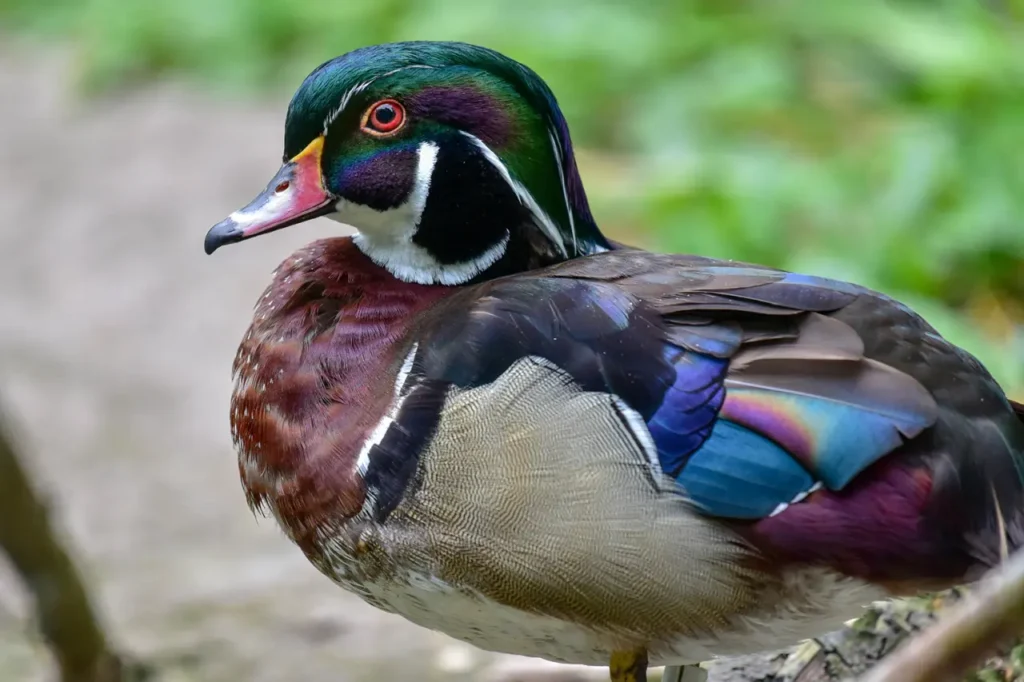
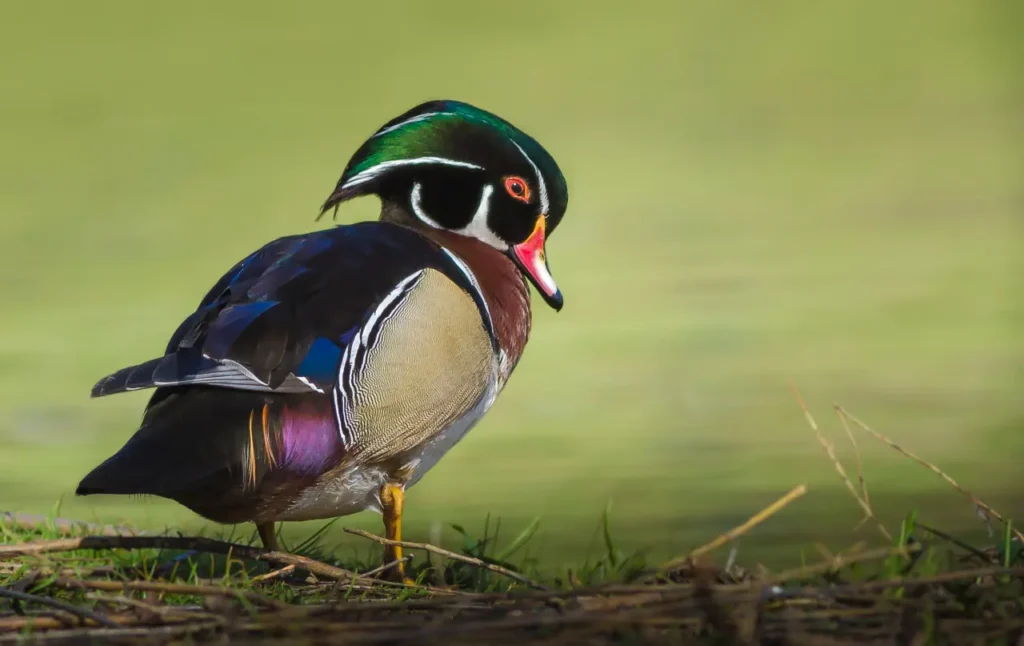
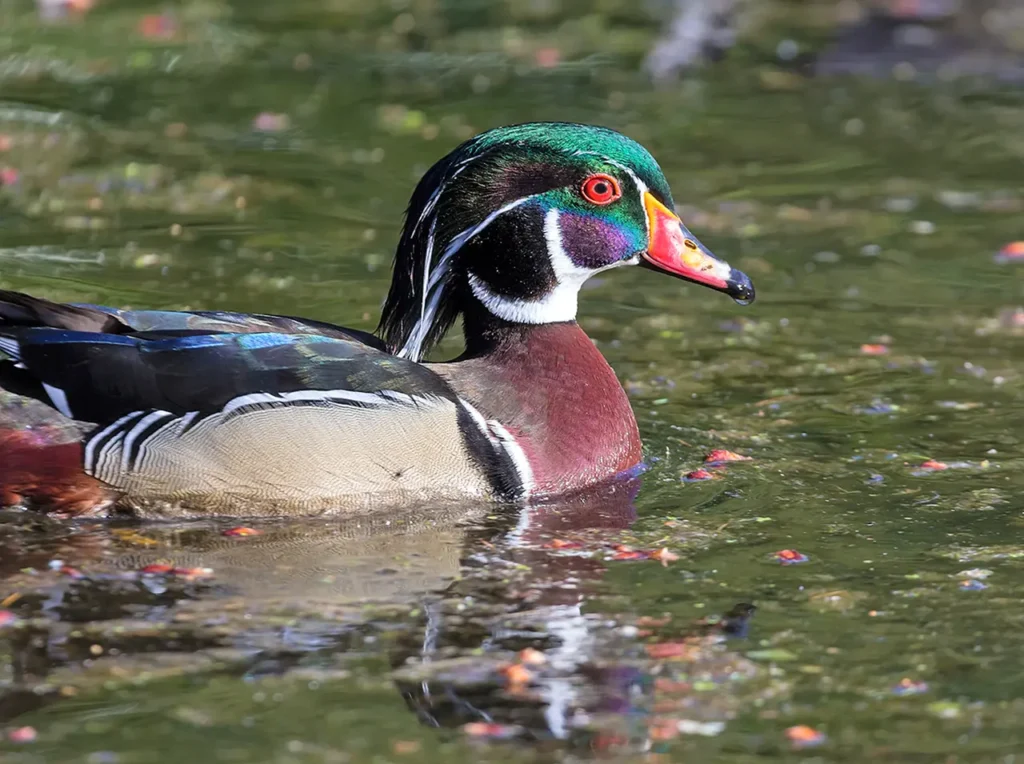
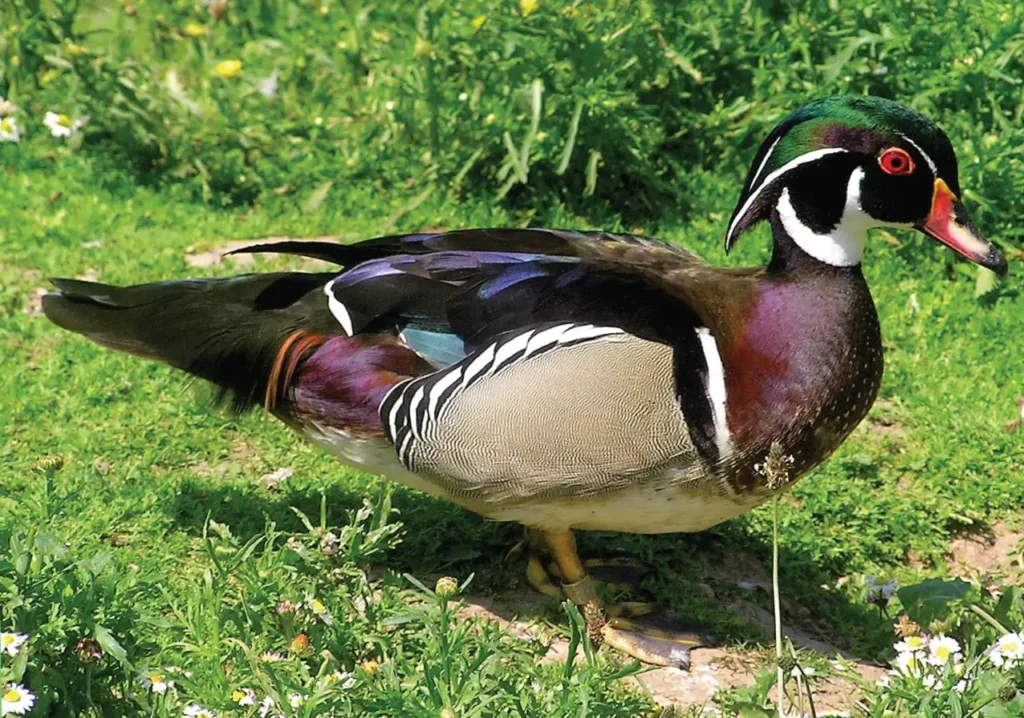
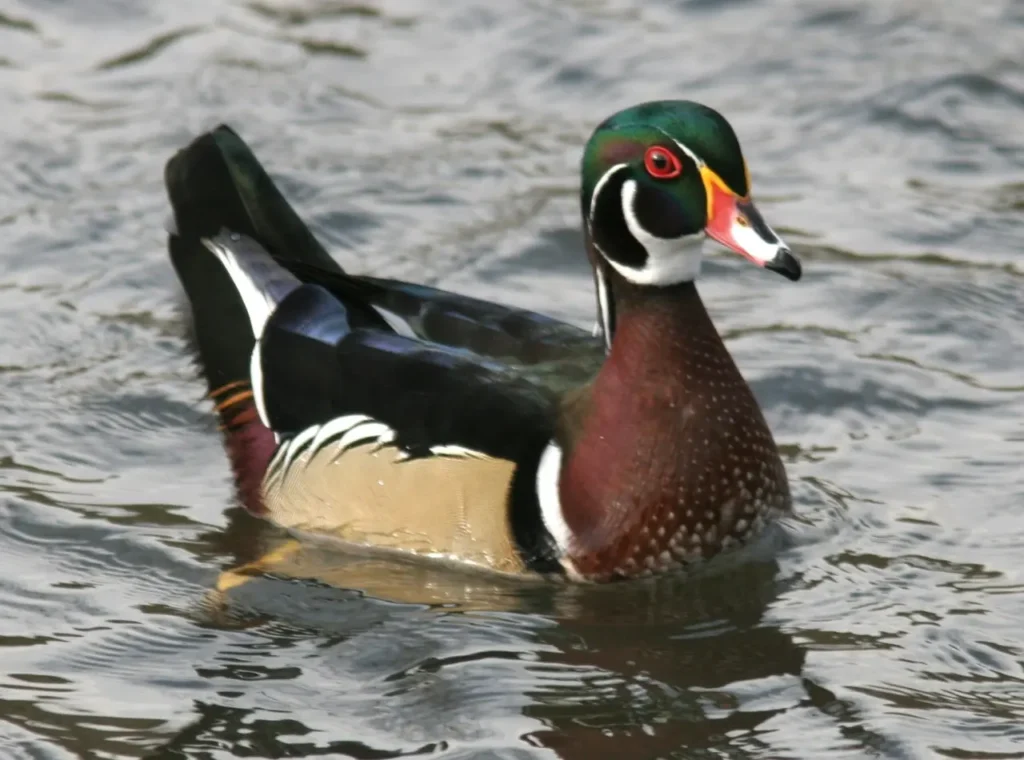
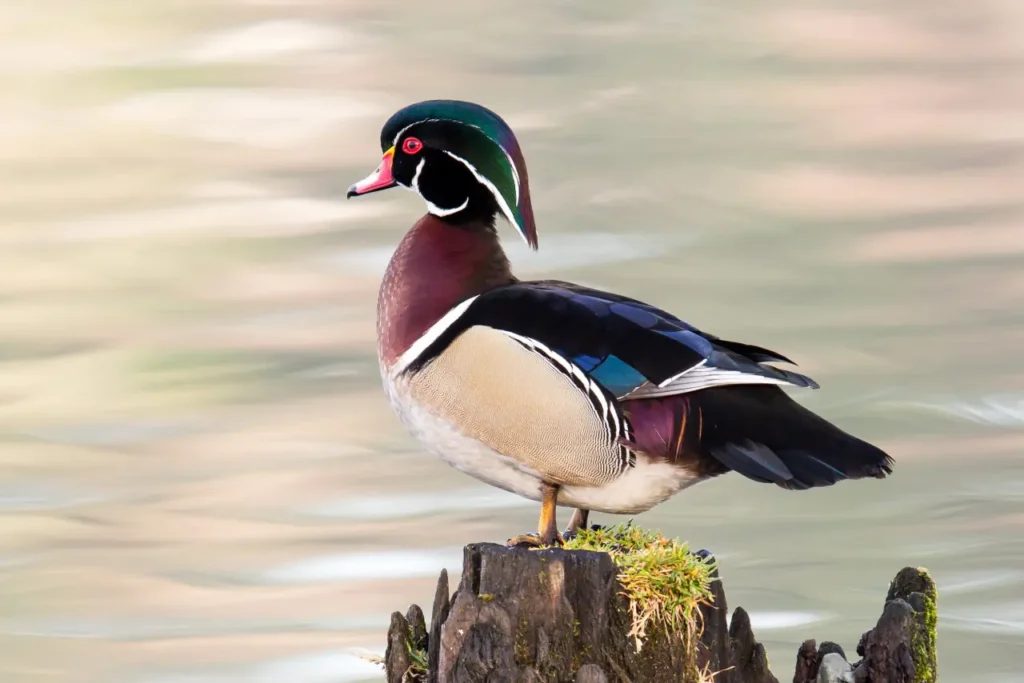
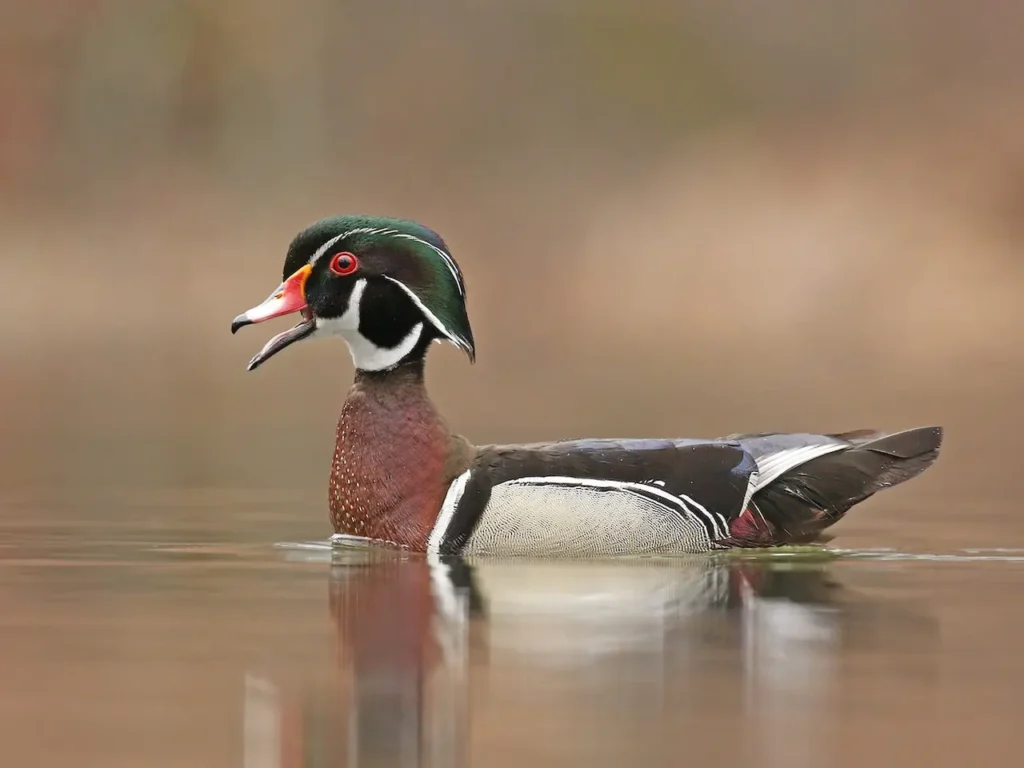
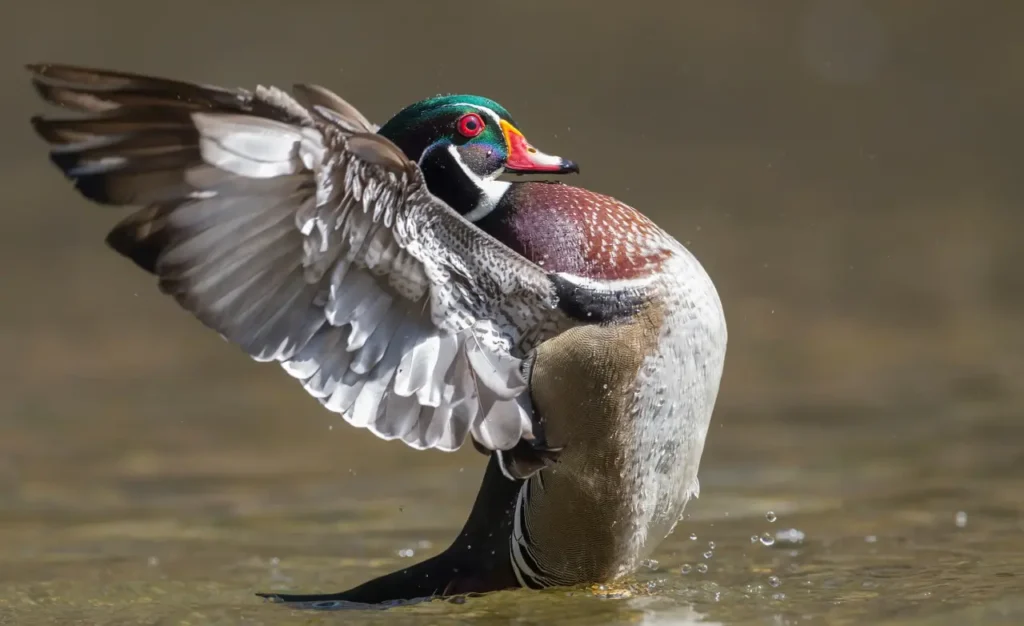
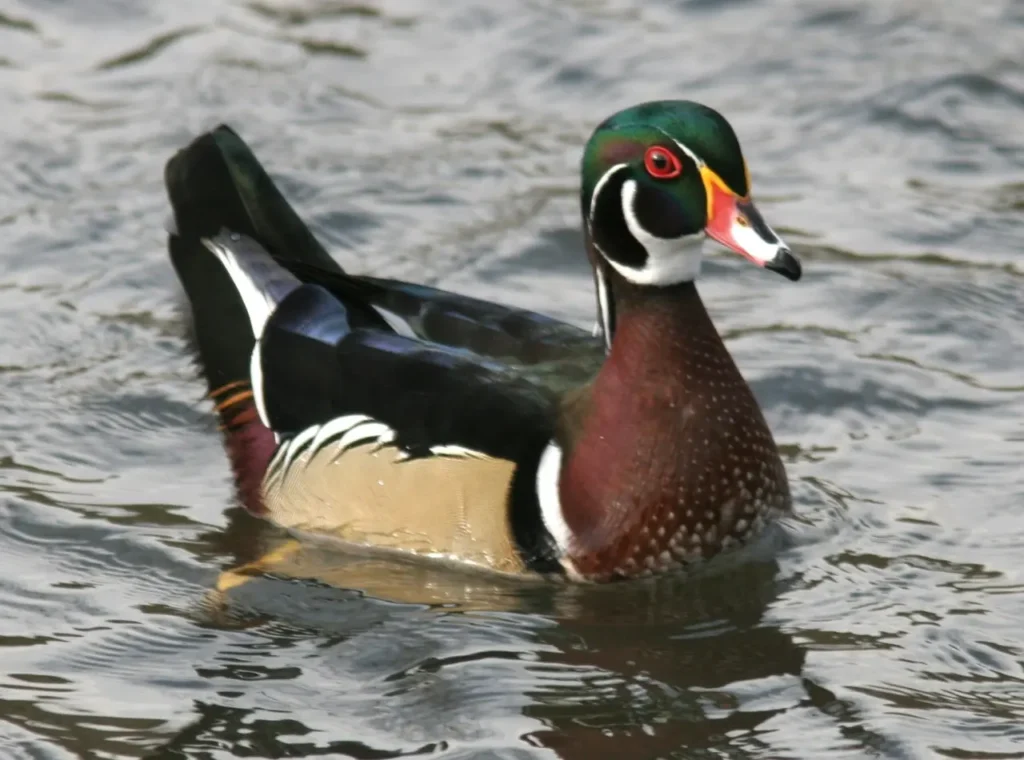
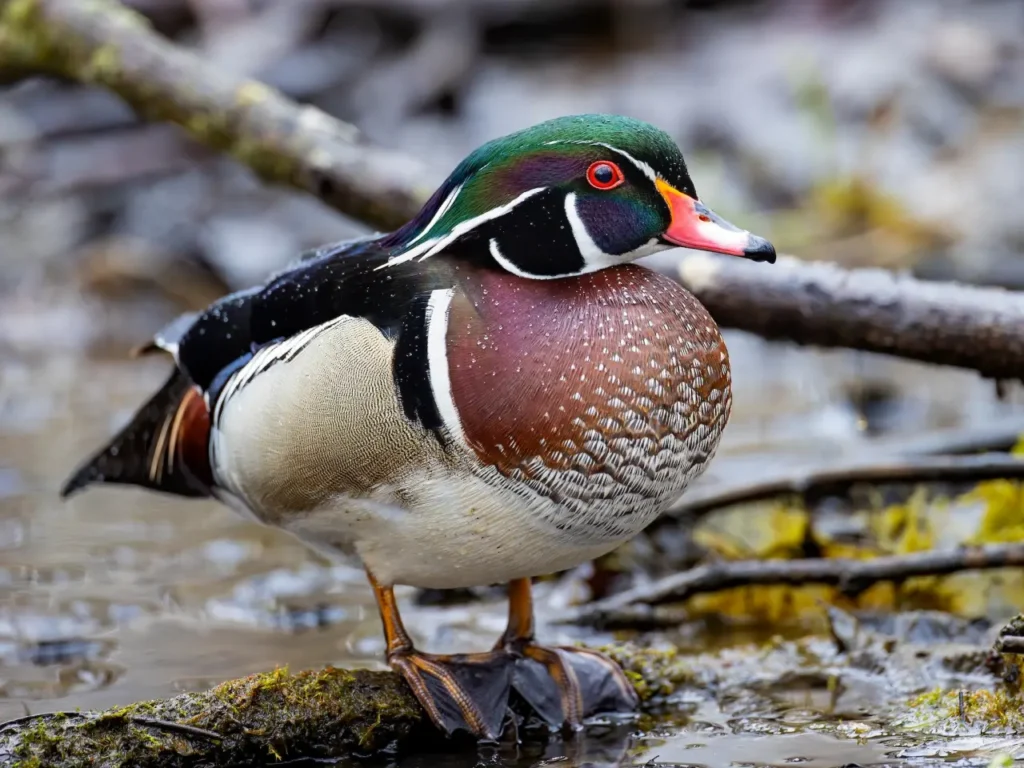
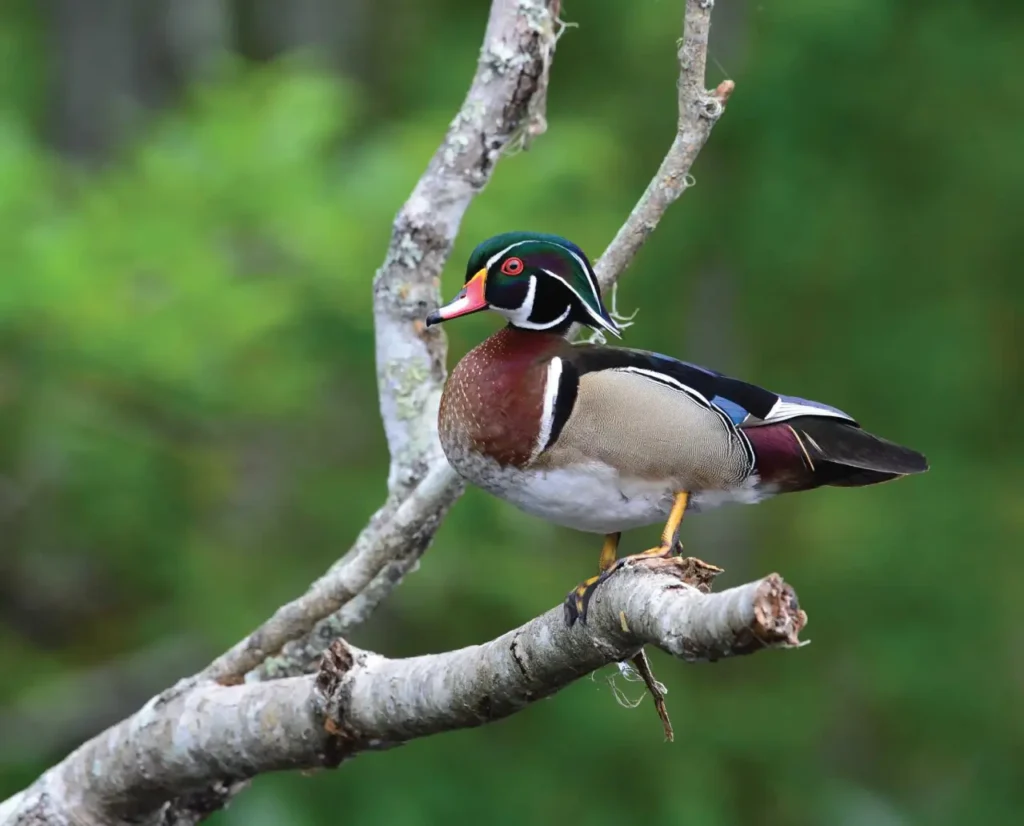
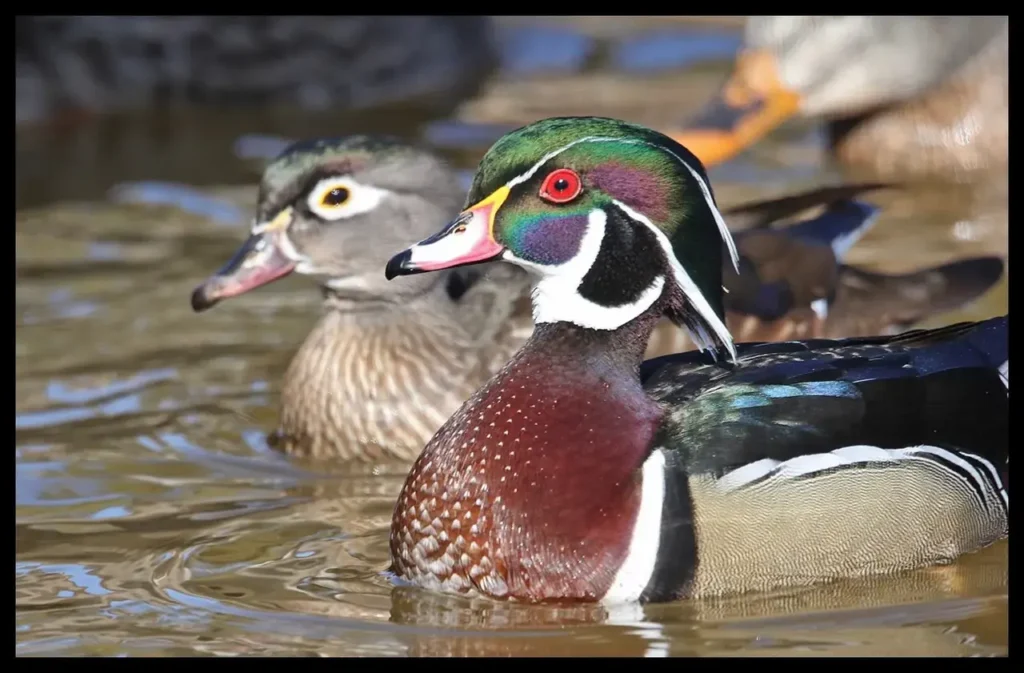
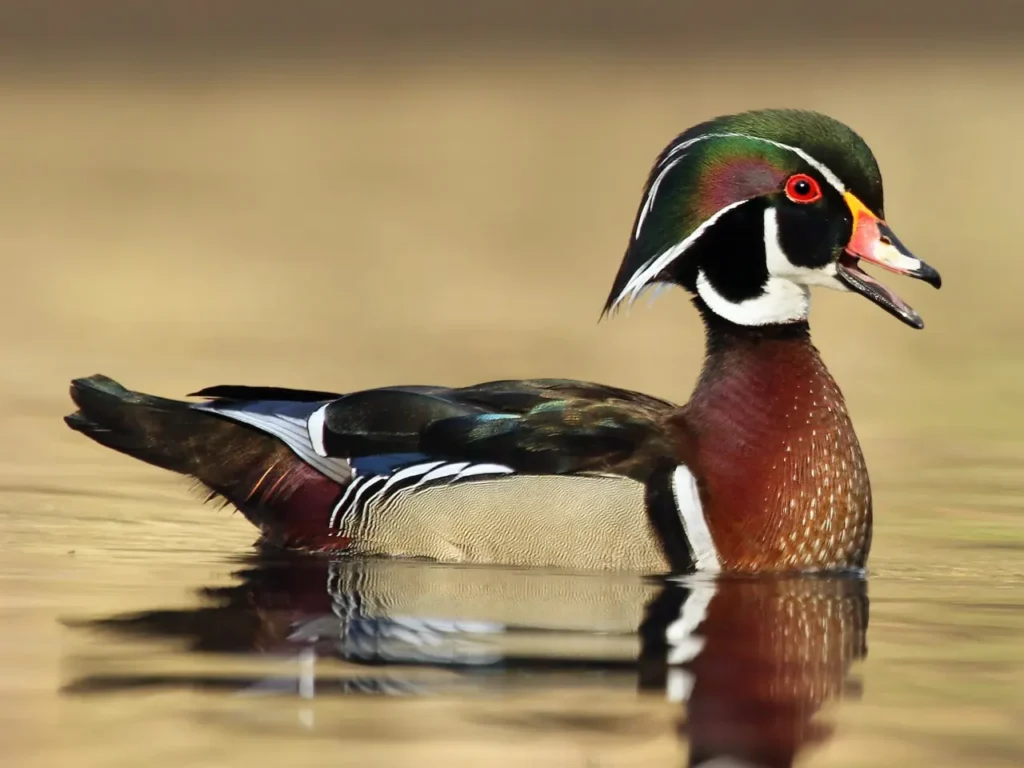
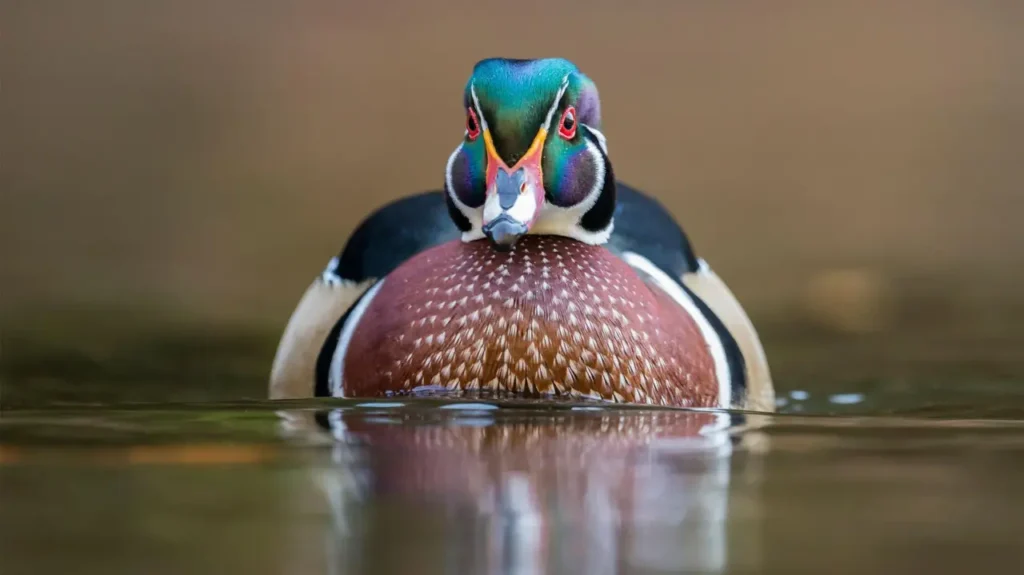
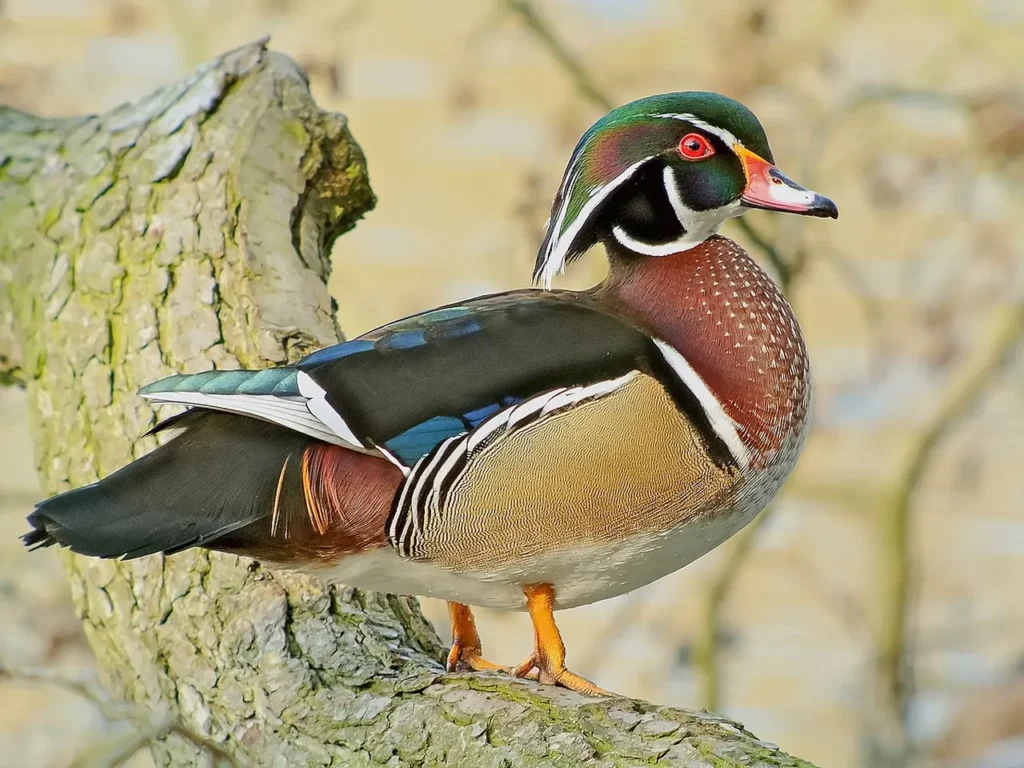
Facts about Wood Duck
The Wood Duck is a medium-sized species, with adult males typically measuring around 19-21 inches (48-53 cm) in length and females slightly smaller at 17-19 inches (43-48 cm). What sets them apart is their striking plumage. The male Wood Duck boasts a multicolored palette of iridescent greens, blues, purples, and browns, blending together in intricate patterns across its body. Its head features a distinctive crest, which can be raised or lowered depending on its mood or display. In contrast, females exhibit more muted colors, showcasing a combination of grays, browns, and whites, with subtle striping on their flanks.
The Wood Duck’s natural habitat encompasses wooded swamps, marshes, ponds, and lakes in North America. They are primarily found in eastern and central regions of the continent, where they make use of cavities in trees as nesting sites. This unique nesting behavior sets them apart from most waterfowl species. They are cavity nesters, using natural tree cavities or the abandoned nests of other birds to lay their eggs. In areas lacking suitable natural cavities, they readily adapt to artificial nest boxes provided by conservation efforts.
During the breeding season, the male Wood Duck engages in a captivating courtship display to attract females. This involves head-bobbing, wing-flapping, and a distinctive whistle-like call. Once a pair forms, the female constructs a nest inside the chosen cavity, lining it with down feathers for insulation and comfort. She lays a clutch of 6-15 eggs, and both parents take turns incubating the eggs for approximately 28-32 days until they hatch. After hatching, the adorable ducklings leap from the nest, guided by their mother’s calls, and instinctively make their way to the water below.
Wood Ducks are omnivorous, feeding on a varied diet that includes seeds, nuts, fruits, aquatic plants, insects, and small invertebrates. They possess a unique adaptation known as a serrated bill, which aids them in capturing and consuming their preferred food sources. They are skilled divers, capable of submerging themselves underwater to forage for aquatic vegetation and invertebrates.
The conservation of the Wood Duck has been a remarkable success story in the realm of wildlife conservation. During the early 20th century, their populations faced significant declines due to habitat loss and overhunting. However, concerted conservation efforts, including the establishment of protected areas, creation of artificial nesting structures, and strict hunting regulations, have led to their remarkable recovery. Today, the Wood Duck populations have rebounded, and they are a testament to the positive impact of conservation initiatives.
For birdwatchers and nature enthusiasts, observing Wood Ducks in their natural habitat is a truly awe-inspiring experience. Their vibrant colors, intricate patterns, and graceful demeanor make them a sought-after sighting. Many wildlife photographers and artists find inspiration in capturing the beauty of these majestic creatures on film or canvas.
In conclusion, the Wood Duck stands as a testament to the wonders of the natural world. Its remarkable plumage, unique nesting behavior, and adaptability make it a true gem among waterfowl species. Through conservation efforts and a growing appreciation for its beauty, the Wood Duck continues to enchant and inspire








